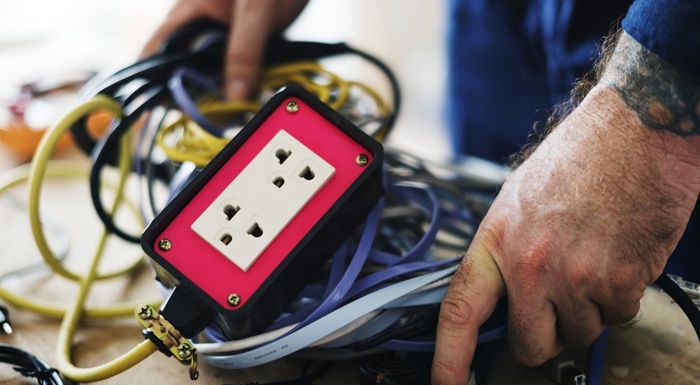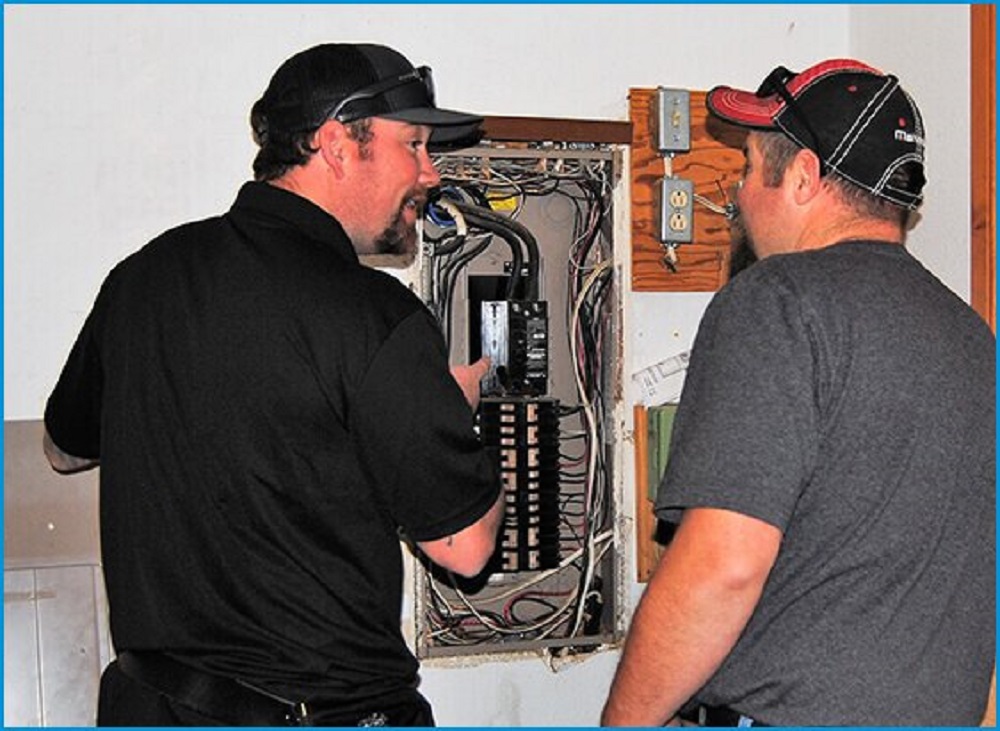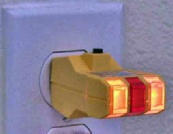What Your Electrician Looks For During an Electrical Inspection
My hometown of Oak Ridge, Tennessee, is full of relics of the American Atomic Age—after all, the city was built with the sole purpose of housing the federal employees who processed and refined the uranium that powered the massive weapon that effectively ended World War II
As you drive around the city these days, you can still see remnants of the 1940s version of Oak Ridge in the neighborhoods of war-era, government-issued modular homes and the post-war, cement block homes that were constructed once it became clear that the city’s residents were here to stay.
Do I Need an Electrical Inspection?
he short answer is yes (probably). “Ninety-nine percent of the time, homeowners aren’t aware that they need an inspection,” Wes notes. Some electrical problems are easy to ignore, after all. A circuit breaker tripping from time to time probably doesn’t occupy much space in your brain once you’ve reset the breaker and restored power, and you’re in good company if you’ve never tested the GFCI outlets in your house.
Buying a house
If you just bought a house or are in the process of purchasing a home, you’re probably well versed in the importance of a good home inspection. But any home inspector worth their salt will tell you that they simply cannot catch every little thing that could possibly go wrong.
Lack of inspection history
If the pre-closing home inspection is the only time you’ve had your house looked over by a pro, an electrical inspection is one of the best things you can do for your safety. Safety issues, Wes says, are the primary focus of any electrical inspection his team conducts.

Home Inspections
Home inspections are a part of the home sale process. They are usually done sometime after a purchase agreement is signed. A purchase agreement should contain a clause that the sale is contingent on the results of an inspection. A new mortgage or a home warranty typically requires an inspection.
What is a Home Inspection?
A home inspection is an inspection of the structure and systems of a house. They typically include the foundation, basement, heating system, plumbing, central air conditioning, electrical, roof, and attic. An inspection should be done by someone who is certified by the American Society of Home Inspectors (ASHI).
Electrical Panel Inspection
During an electrical panel inspection the inspector typically looks for the following:
Clearance in front and top of the panel (3 feet deep and 30 inches wide) (6 feet headroom on top of panel).
Proper wiring, grounding, and bonding.
Discolored, oxidized, corroded, or damaged wires.
Correct circuit breaker or fuse amperage ratings. Breaker size shall be 15 amps for #14 (AWG) wire, 20 amps for #12 wire, and 30 amps for #10 wire, and 40 amps for #8 wire.
Only one wire is allowed to be connected to each circuit breaker.
Check for copper and aluminum wires and whether the breakers are listed for copper or aluminum
Electrical Systems Inspection
An electrical systems inspection and testing typically includes the following:
GFCI protection for kitchen countertops, bathrooms, garages, outdoors, within six feet of a sink, unfinished basements, and boathouses.
Service-entrance, electric meter, and main disconnect.
Receptacles and switches are in working order.
Any wire connections that are not inside of an electrical box.
Smoke alarms are present.

Electrical Inspection: Why It Is Important Before Buying a Home
A proper home inspection is incomplete without having the electrical inspected thoroughly. That’s because an electrical inspection not only clearly reports the health of your electrical system, but it also makes sure that the home is up to safety standards, as required by the National Electrical Code. Therefore, you should never ignore the importance of getting an electrical inspection done when purchasing a home.
What is involved in an electrical inspection?
The comprehensive electrical inspection for a house involves looking for uncovered or exposed wires, outdated wiring, and electrical equipment, testing safety switches, power box, smoke alarm testing, and determining any electrical hazard. These are some standard electrical inspection checklist components that should be taken into account.
Why You May Need a Home Electrical Inspection?
There are many reasons for getting an electrical inspection. Old wirings cannot withstand modern-day living needs, so electrical inspection services aid you in your decision to buy an older home. Besides, when purchasing a resale home, you should always have a comprehensive electrical inspection. Owners renovate, add equipment that is often unlicensed and not up to today’s standards.
Helps You Identify Common Electrical Mistakes
An electrical inspection should be included in the overall home inspection report. Before hiring your home inspector make sure that they will thoroughly inspect the electrical of the house, so ensure any dangerous electrical situations are found. These can be very expensive to repair once the property has been purchased. The inspector should identify any common electrical mistakes that were made by contractors and previous DIY homeowners. The inspector should also check for electrical wiring and components that may have degraded over time
Assures That Your Electrical Wiring Is Safe
It’s known that electrical can be extremely dangerous, even deadly, so it is imperative to make sure that the electrical systems in a home are safe and up to code. Inspecting the condition of electrical should be every home inspector’s top priority. Incorrect, faulty, or DIY wiring can be a huge safety and fire hazard, along with exposed wires and overloaded circuits. Having a home inspector who has electrical knowledge and will meticulously analyze the system is very important.

What Sellers Can Expect from an Electrical Home Inspection
home inspection covers a lot of details to make sure that the house you’re selling is up to code, safe for a potential buyer, and doesn’t have a costly hidden maintenance issue. But even though home inspectors are trained to identify a lot of issues, they might recommend that a buyer call on an electrician’s expertise for an electrical home inspection.
That’s often because of a home’s age, its wiring, and whether the electrical service panel has been updated. “A lot of older homes have different wiring,” said Glover “There’s a wiring called knob-and-tube that still exists in a lot of homes today. There are some complications with that.”
Electrical home inspections 101: Keeping your home’s wiring safe and up to code
Your home’s electrical system is a vital component of protecting your family—and anyone who buys your home. Electrical distribution or lighting equipment in the home remains the 4th leading cause of home fires, according to the National Fire Prevention Association.
The National Fire Protection Agency said in a 2017 report that electrical distribution, lighting, and power transfer equipment was involved in 57% of home structure fires from 2010 to 2014.
In all, U.S. firefighters from 2010 to 2014 responded to an estimated annual average of 45,210 home structure fires with some type of electrical failure or malfunction, the NFPA said. These fires caused an estimated $1.4 billion in property damage and killed an estimated 420 people and injured about 1,370, NFPA statistics show.

Common Electrical Problems Found During Home Inspections
Whenever a home is being sold, it’s a common (and smart) practice for a prospective buyer to hire a qualified home inspector. Home inspectors can not only help assess a home or buildings condition but identify potential problems that may be factored into the terms of a sale or purchase price. In some cases buyers also engage the services of a licensed electrician to check and identify any electrical problems that a regular home inspector might miss. The most common problems we have seen that result in failed home inspections include the below
Extension Cords in Permanent Use
Extension cords are to be used on a temporary basis for an external or remote power supply. If somebody is using extension cords on an everyday basis, that can only mean one thing: There aren’t enough outlets to handle all of the electrical devices the home or building uses today. This is more common in older homes, but it is a safety concern and it should always be corrected prior to a sale.
Improperly Wired Switches
This is a common problem electricians find when doing an inspection. People who try to do their own wiring or hire somebody who has only rudimentary electrical skills will often use reverse polarity when wiring a switch or an outlet. This happens when hot and neutral wires get “flipped” around, and doing this creates a shock hazard.
Missing or Faulty GFI Outlets
Faulty GFIs are a major issue even in newer homes in the Las Vegas / Henderson area due to the common use of cheap > lower quality materials. GFI (short for ground fault interrupter) outlets are what’s required wherever an electrical outlet is close to a source of water (like in a bathroom). The indicator of GFI failure is when they prematurely or frequently ‘trip’ resulting in the loss of power to localized electrical components (lights or other power supplies on the same circuit). GFI replacement is a relatively quick fix for a licensed electrician, and with higher quality components will result in several years of reliable use. It’s essential that GFIs are kept in good working order as their function is to protect you from the possibility of electrocution
Double-Tapped / Lugged Breakers
This is when multiple wires are attached to a single breaker – a dangerous practice. As most circuit breakers are designed for single wires, this can cause loose connections, arcing, and potentially a fire. This is typically corrected by either the addition of additional breakers or in some cases where there are not load concerns, by wire nutting the connections together prior to the breaker panel.